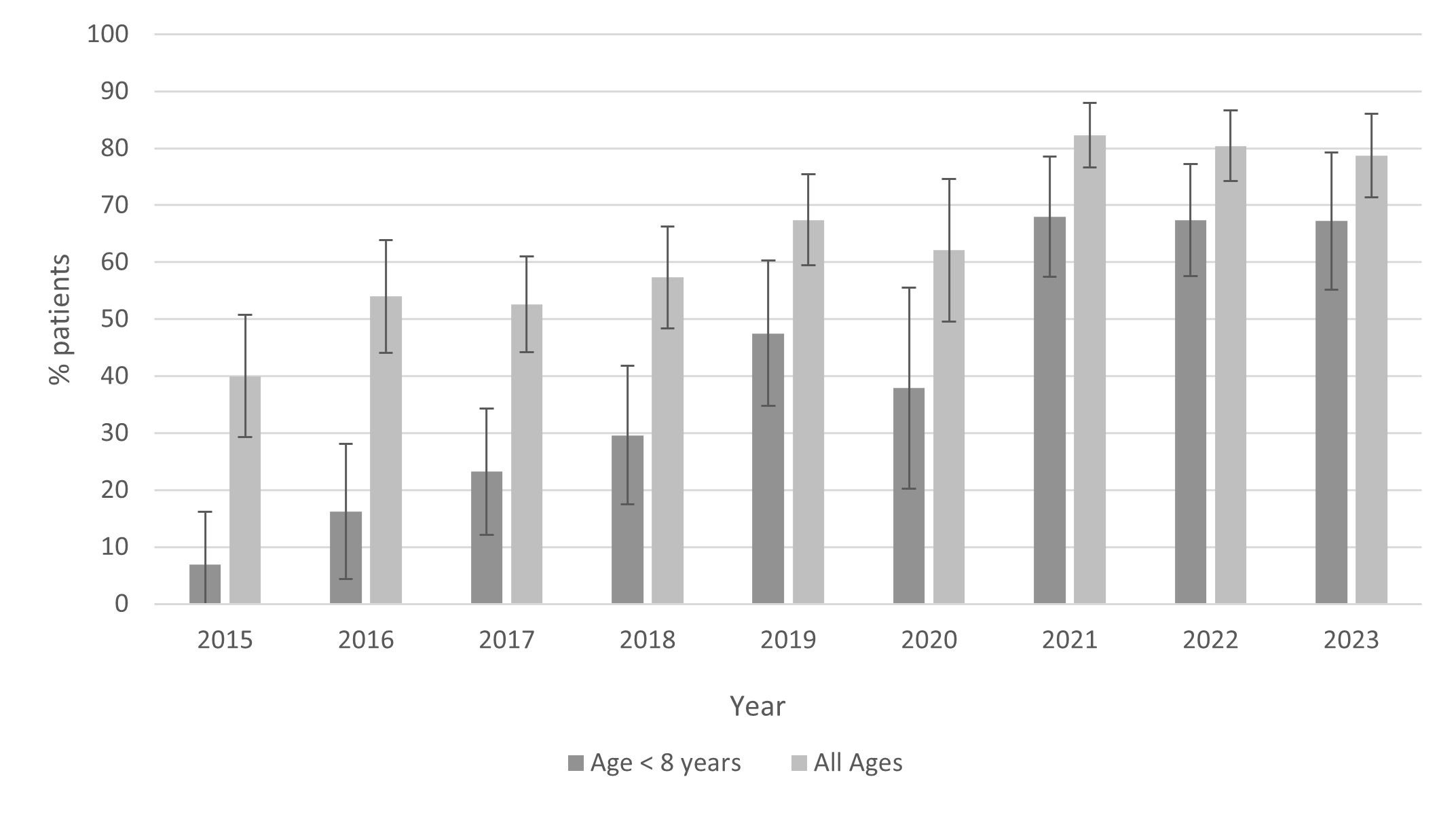Infectious Diseases
Session: Infectious Diseases 2
70 - Increased Usage of Doxycycline for Young Children with Lyme Disease
Saturday, May 4, 2024
3:30 PM - 6:00 PM ET
Poster Number: 70
Publication Number: 70.1432
Publication Number: 70.1432

Amy D. Thompson, MD, MSCR (she/her/hers)
Attending Physician
NemoursAlfred I. duPont Hospital for Children
Wilmington, Delaware, United States
Presenting Author(s)
Background: For many years, tetracyclines were not recommended in children under 8 years of age due to concerns of dental staining. In 2018, the Infectious Disease Committee of the American Academy of Pediatrics stated that three weeks or less of doxycycline was safe in children of all ages.
Objective: Our goal was to examine doxycycline treatment for children < 8 year of age with confirmed Lyme disease.
Design/Methods: We assembled an eight-center prospective cohort of children aged 1 to 21 years of age with Lyme disease who presented to one of 8 participating Pedi Lyme Net centers between 2015 and 2023 defined with an erythema migrans (EM) lesion or positive two-tier Lyme disease serology obtained within 30 days of enrollment. Lyme disease cases were categorized by stage: early localized (single EM lesion), early disseminated (multiple EM lesions, facial palsy, meningitis, carditis), and late (arthritis). We compared the proportion of children treated with any doxycycline by age (>/= 8 years vs. < 8 years of age) and by Lyme disease stage. For children < 8 years, we used logistic regression to examine trends over the study period.
Results: Of the 1077 children with Lyme disease, 93 (8.6%) had early, 402 (39.0%) early-disseminated, and 564 (52.4%) late disease. Doxycycline treatment was more common for older children [492/594 (82.8%) >/= 8 years vs. 224/483 (46.4%) < 8 years; p < 0.001] and with early-disseminated disease [324/420 (77.1%) early-disseminated vs. 49/93 (52.7%) early localized vs. 343/564 (60.8%) late; p < 0.001). For children under 8 years, doxycycline use increased over the study period (6.9% 2015 to 67.2% 2023; odds ratio 1.46, 95% confidence interval 1.34, 1.60).
Conclusion(s): Young children with Lyme disease are frequently treated with doxycycline, with utilization increasing. Prospective studies are needed to confirm the safety and efficacy of this approach especially for patients with neurological symptoms and those requiring longer courses of antibiotics.

